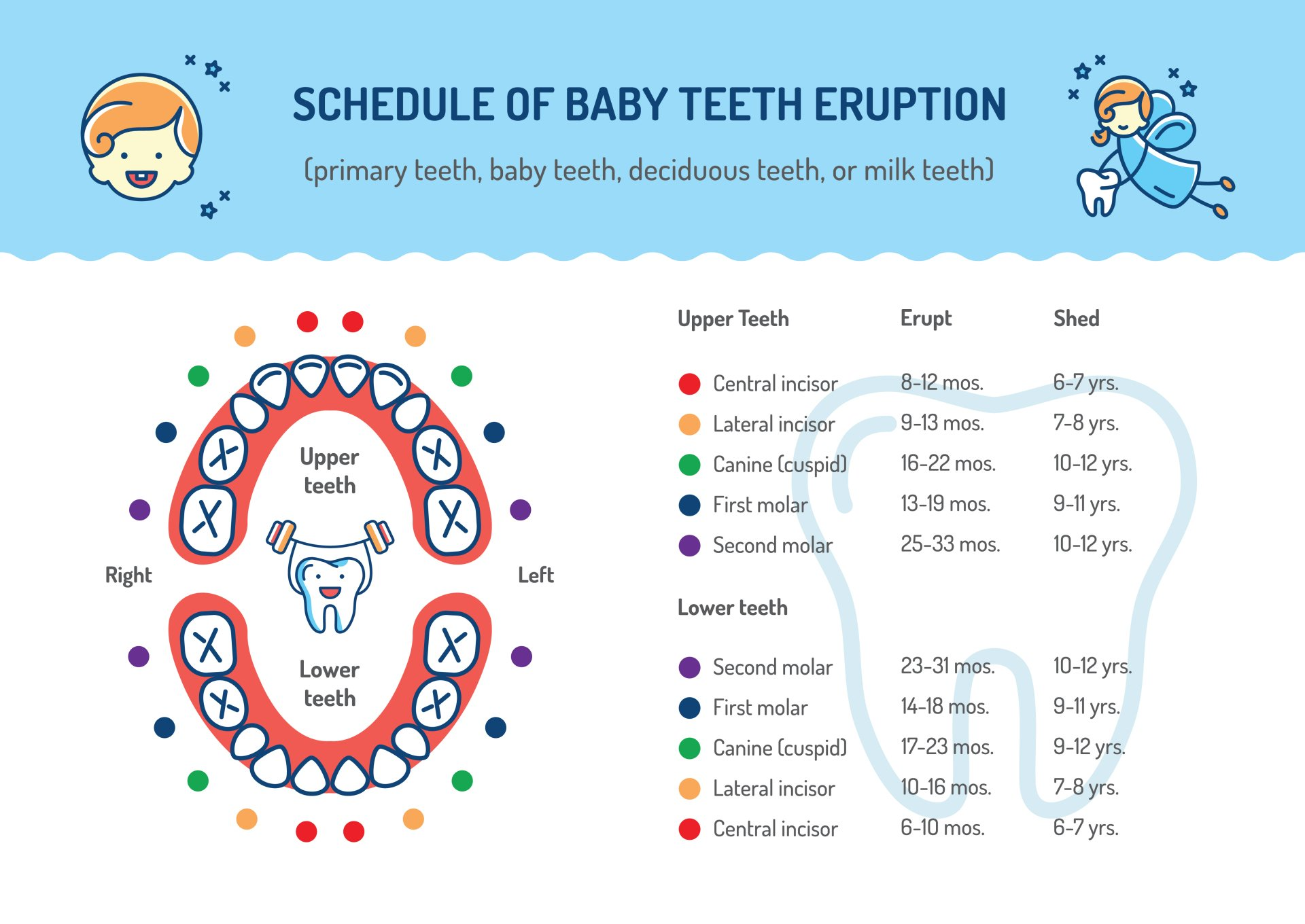Understanding Baby Teeth | Eruption Schedule
Pediatric dentistry is the specialized field focused on caring for children’s teeth. So, what do you need to know about taking care of your child’s teeth? Let’s break it down. Baby teeth start to emerge between 6-12 months, and continue until your child is about 2.5-3 years old. During this teething period, your child’s gums may become tender and sore due to the pressure from new teeth pushing through. To soothe their discomfort, you can gently rub their gums with a clean finger, use a cool or damp cloth, or offer teething rings that help alleviate soreness. As your child grows, their baby teeth will eventually start to fall out, usually around the age of 6, making way for permanent teeth. It’s important to monitor the health of both their baby teeth and emerging permanent teeth to ensure they grow in healthy and strong.
Teething Child
By the time your child is 2-3 years old, all twenty primary (baby) teeth should be in. Teething can be stressful, but it doesn't have to be painful. To ease discomfort, try rubbing your child’s gums with a clean finger, a damp cloth, or the back of a cool spoon. If these don’t help, a mild over-the-counter pain reliever, recommended by your dentist or doctor, can provide relief. Children often chew on anything they can reach, but be cautious about hard objects that could damage their teeth or gums. Avoid using liquid painkillers on gums, as your child might swallow some, and steer clear of sugary teething biscuits. Also, fever is not a normal part of teething—if your child has one, consult their doctor as it’s likely unrelated to teething.
Toothpaste and Toothbrush
For young toddlers, brushing with a toothbrush and water is usually enough. You can use non-fluoridated toothpaste, but encourage your child to spit it out to build good habits. Start with a rice grain-sized amount, and avoid fluoride toothpaste until they can fully spit, as excess fluoride can lead to dental fluorosis, which causes weak enamel and stains.
For infants, a damp cloth is sufficient to clean their gums before their first tooth erupts. Once teeth appear, switch to a finger-brush—a soft, rubber tool that fits over your finger. Avoid aggressive brushing as infants’ diets are mostly milk and soft foods. As more teeth emerge, use a soft-bristle toothbrush. Let your child mimic you while brushing, and consider using games, songs, or music to make brushing fun and encourage proper technique.
Children’s Dental Care
As parents, we often focus on our children's overall health but may overlook the importance of dental care. Good oral health is crucial, especially for kids. Children can face dental issues if they aren’t taught proper oral hygiene or if preventive care isn’t started early. It’s never too soon to emphasize the importance of oral health. Teaching good habits early leads to healthier teeth and gums, fewer dental procedures, and better overall health. Here are some effective ways to maintain your child’s oral health:
List of Services
-
For Your Baby
Baby bottles and sippy cups are major culprits in pediatric dentistry, as they increase the duration and frequency of contact between teeth and sugary liquids like breast milk, formula, juice, and sweetened drinks. To prevent dental issues, clean your baby’s gums and teeth with a toothbrush or wet gauze after each feeding.
-
Instill Good HabitsList Item 1
Encourage your child to brush their teeth after breakfast and before bed. While it may be a struggle at first, developing this habit early makes it easier to maintain throughout their life.
-
Brush Gently
Many children brush too hard, which can damage their gums over time. Teach them to use a soft-bristle toothbrush and to brush gently, as their gums are still developing.
-
Cut Down on Sugar
While sweets are tempting, excessive sugar can lead to cavities and other health problems. Limit candy, soda, and sugary drinks to small amounts to help protect your child’s teeth and overall health.
-
Tips to Ease Your Child’s Dental Fear
- Talk About the Dentist: Discuss upcoming dental visits positively. Avoid words like "hurt" or "pain."
- Lead by Example: Take your child to your own dental appointments so they can see you in the chair and feel more comfortable.
- Practice at Home: Give your child a soft-bristle toothbrush to practice brushing their teeth.
- Stay Consistent: Keep regular dental visits—The Academy of Pediatric Dentistry recommends a visit by your child's first birthday and every six months after that for cleanings and check-ups.

